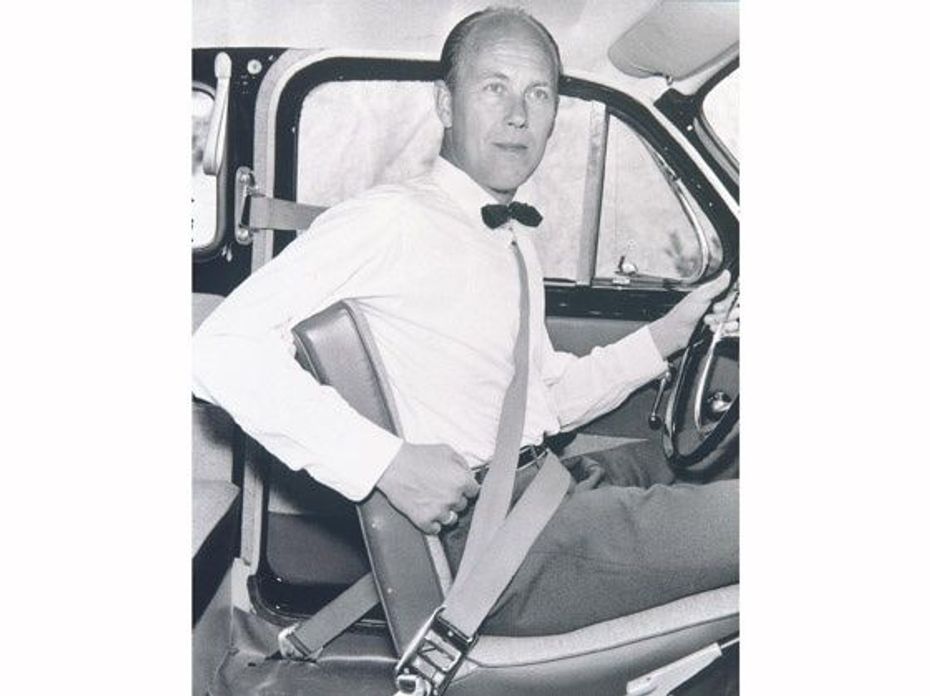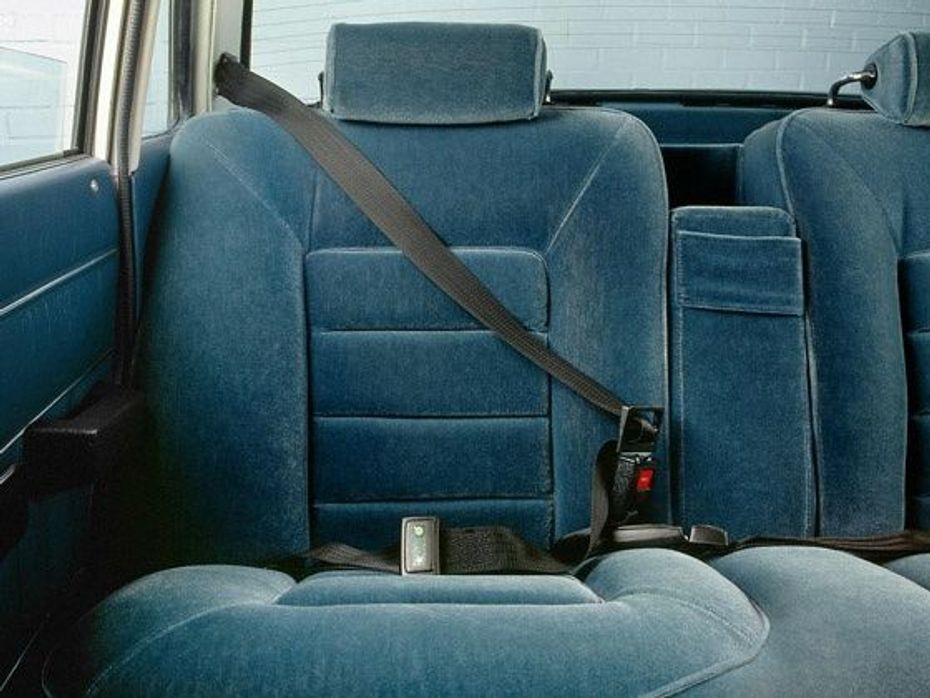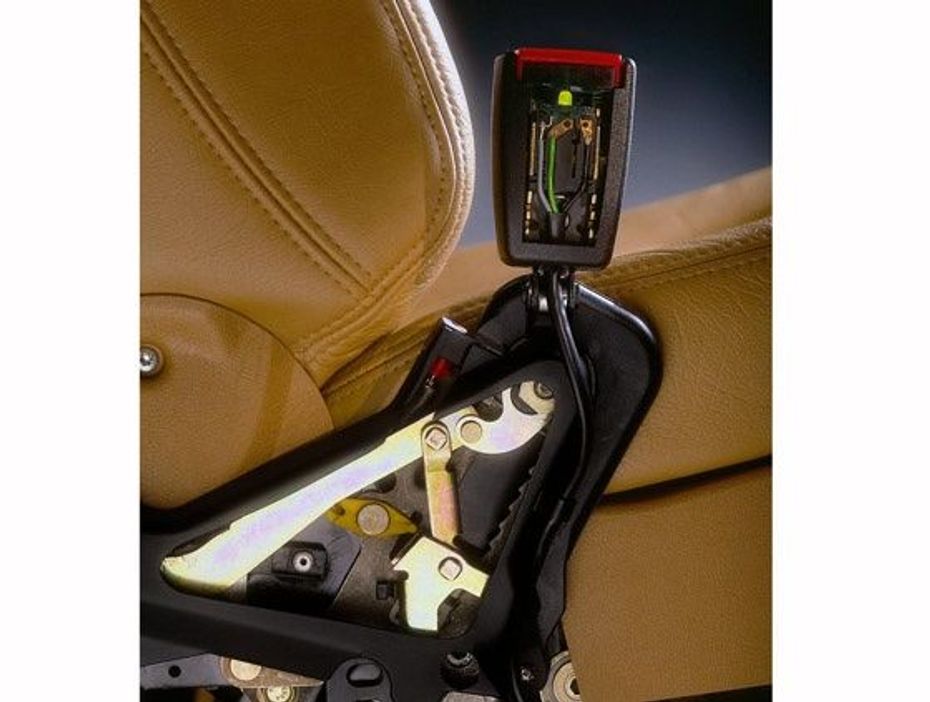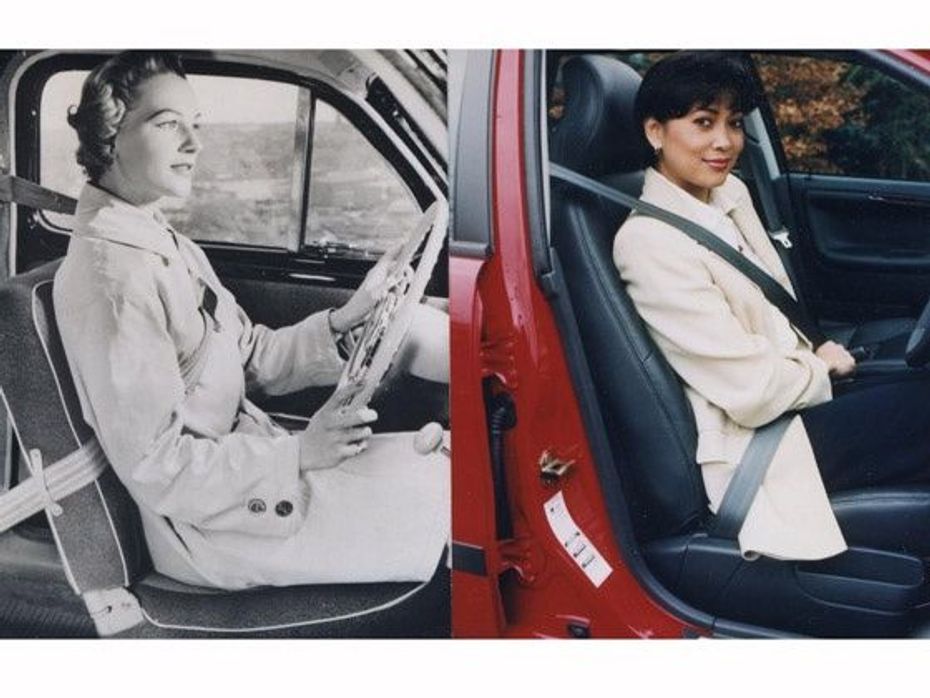
Volvo XC40 Recharge Now More Accessible, New Two-Wheel Drive Variant...
- Mar 7, 2024
- Views : 890


While today it might appear as a very ordinary safety device, but the three-point belt was quite revolutionary when it appeared on August 13, 1959. In the years since, the V-shaped safety belt has saved well over a million lives. It has been called one of the most significant inventions of the 20th century, and it remains the most widely used safety innovations in the automotive history. Every single car sold today uses three-point belts.
It all began with a Volvo PV544 in the town of Kristianstad, Sweden. It was the brainchild of Volvo engineer Nils Bohlin. Not that there weren't any seatbelts before but back in the 1930s, US doctors were beginning to impose demands that cars should be equipped with safety belts. The two-point lap belt was the most common solution, but there were also different variants of the three-point safety belt. The only problem however was that they did not protect their users effectively, especially at high speeds.
Bohlin and Volvo, a company fanatical about safety knew there had to be a better way. Bohlin, a former aviation engineer at Saab who worked on airplane catapult seats, knew an effective belt must absorb force across the pelvis and chest yet be so easy to use that even a child could buckle up. He came up with an ingenious solution that combined a lap belt with a diagonal belt across the chest. He anchored the straps low beside the seat so the geometry of the belts formed a V with the point directed at the floor. This particular design meant that the belt would stay put and not shift under a load.

The design was extremely simple yet very effective. Drag it out, click and pull taut. Buckled up, the risk of fatality or serious injury went down by more than 50 percent. In 1967 Volvo presented its ground-breaking "28,000 Accident Report" at a traffic safety conference in the USA. The report showed clearly that the safety belt not only saved lives but it also reduced injuries by about 50 to 60 percent. Today the three-point safety belt is fitted to cars the world over. Volvo introduced this feature as a standard in both front and rear seats as far back as 1967. The modern safety belt is the cornerstone of the car's interior safety system, working alongside additional features such as airbags, belt pre-tensioners and force limiters. The belt positions itself correctly in an impact - the pre-tensioner tightens the strap across the torso. It then gives at exactly the right moment so that the body can be restrained as gently as possible. And all this happens within the fraction of a second.
It is believed by many that the three-point safety belt has not changed over the past fifty years. It's a fact which is both right and wrong. The belts basic design is the same, however the difference today is that the belt is part of a high-tech safety system which is under constant development. However, even if the changes are not visible, work on enhancing the safety belt has continued at Volvo to keep pace with the rapid advances in safety technology in general.

Here are some of the advancements that this humble lifesaver has gone through and could go through in the future
Inclusion of sensors:
The belt pre-tensioners, airbags and force limiters when deployed are based on the size of the seated occupant and the type of the collision. In order to get the calculations right, the car's ECM uses data obtained from thousands of pre-programmed collision scenarios and real-life accidents previously analyzed by Volvo. The information comes from sensors located all over the car. A main processor in the middle of the car collects the data and accordingly decides how the systems, including the safety belt, should interact.
Possibility of a Four-point safety belt:
Four point safety belts have been discussed as a possible alternative by Volvo and other manufacturers as well. Where it scores over the 3-point setup is by restraining the occupant more effectively if at all the car turns turtle. It's one of the reasons why rally cars are fitted with four-point safety harnesses or belts. However, they have their share of disadvantages as well and there is as yet no good technical solution that offers a suitable balance across all the required parameters.
Motorized belts: This is an exciting new concept that tightens the belt and places the driver in the right position in potentially hazardous situations. The system steps in if the car is driven quite actively with more steering wheel movement and the driver can benefit from support offered by the belt. The best part about this technology however is that it can be activated unlimited number of times without getting exhausted unlike airbags and pyrotechnical belt pre-tensioners.

Belts with added convenience:
A fair amount of people still defer from wearing safety belts. Solutions that make use of more natural and convenient techniques are therefore constantly being discussed. Tests have been conducted on fully automatic systems where the belt is placed across the seat occupant and then fastened. However it faces a lot of challenges that the development engineers still have to solve.
It's impossible to put an exact figure on the number of lives the three-point safety belt has saved since 1959 - there are no globally coordinated traffic-safety statistics. Estimates put the figure at just over a million lives and many times that number have avoided serious injuries thanks to the safety belt. In Europe, the safety belt is estimated to reduce road fatalities by 40 percent every year. The figure for Germany alone was 2,000. Had these drivers not been using the belt, the number of fatalities in Germany that year would have doubled. Corresponding estimates for the USA in 2004 show that safety belt usage saved 15,200 lives and resulted in society saving approximately 50 billion dollars in costs.
Being an integral part of any car's safety system, one thing is for sure - these life saving belts are definitely here to stay and will continue saving lives well into the future as well. So buckle up and drive safe!

Myths about the safety belt
Irrespective of these objections, the basic rule is that it is always better for everyone and at all speeds to wear a safety belt than to not do so. The safety belt is vital in collisions at low speeds in city traffic - where most road accidents occur. The forces involved at low speeds are higher than perceived. Colliding at 50 km/h corresponds to the force of hitting the floor having fallen from the third floor of a building. A person who is forewarned can brace himself for an impact of up to about 6 km/h. That is why the safety belt should always be used.
The evolution of safety belts:

Volvo XC40 Recharge Now More Accessible, New Two-Wheel Drive Variant...

Maruti Suzuki Rock N Road: Redefining the SUV Experience

Bosch Car Service: Your Trusted One-stop Destination for Car...

3 New Major Design Details Mahindra XUV 3XO Will Pack Over...

You Can Now Name Skoda India’s Upcoming Sub-4 Metre SUV

Tata Curvv: A Much Clearer Look At Its Interior Ahead Of Its Unveiling

This Tata Car Has Been Announced As The Official Car For IPL 2024

Ford Endeavour And Ranger India Launch Possible WITHOUT Expensive...

Citroen Basalt vs Tata Curvv: Exterior Design Compared

Skoda India Announces Future Plans, Tata Nexon Sub-4 Metre SUV Rival...
India's largest automotive community